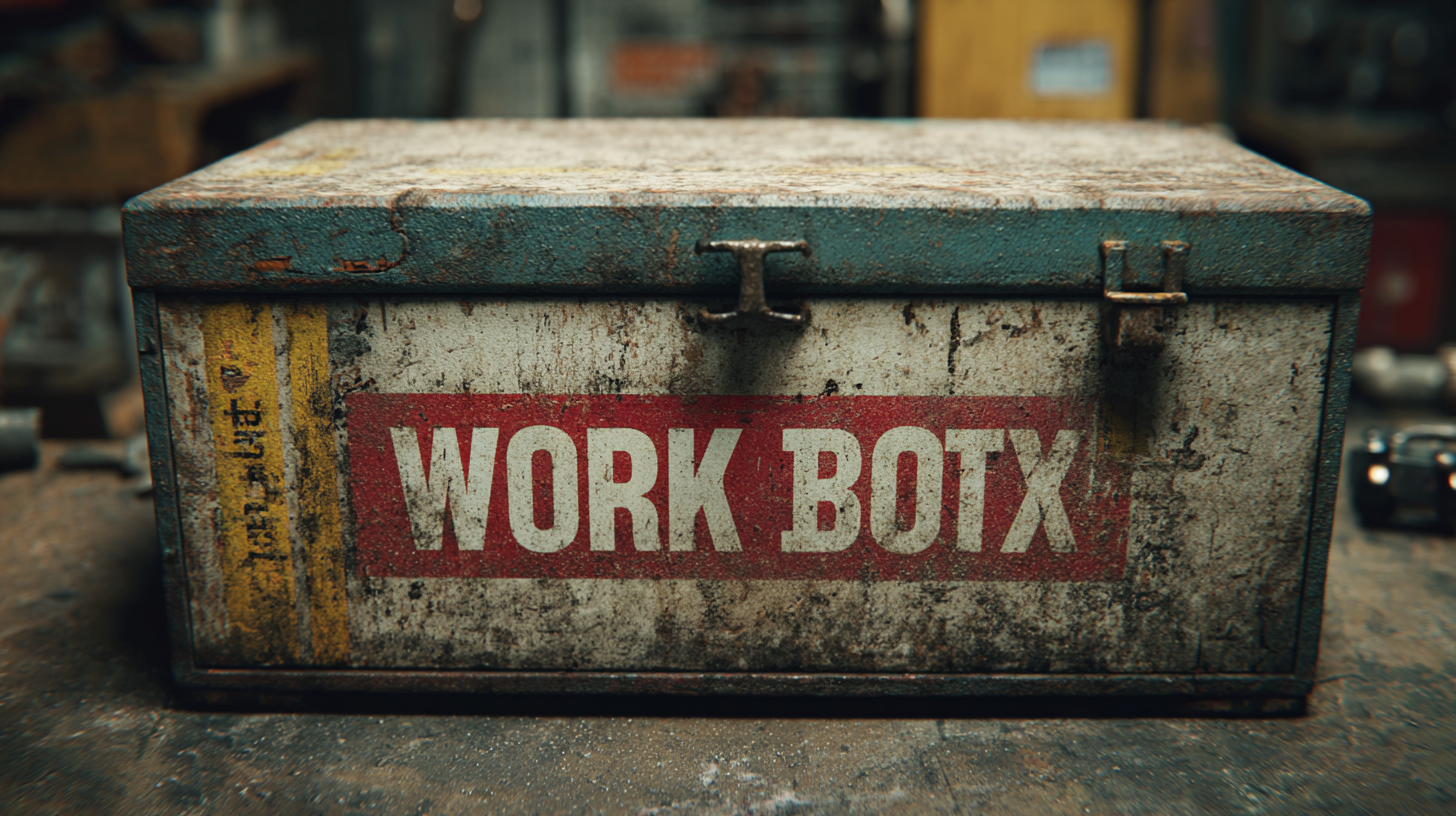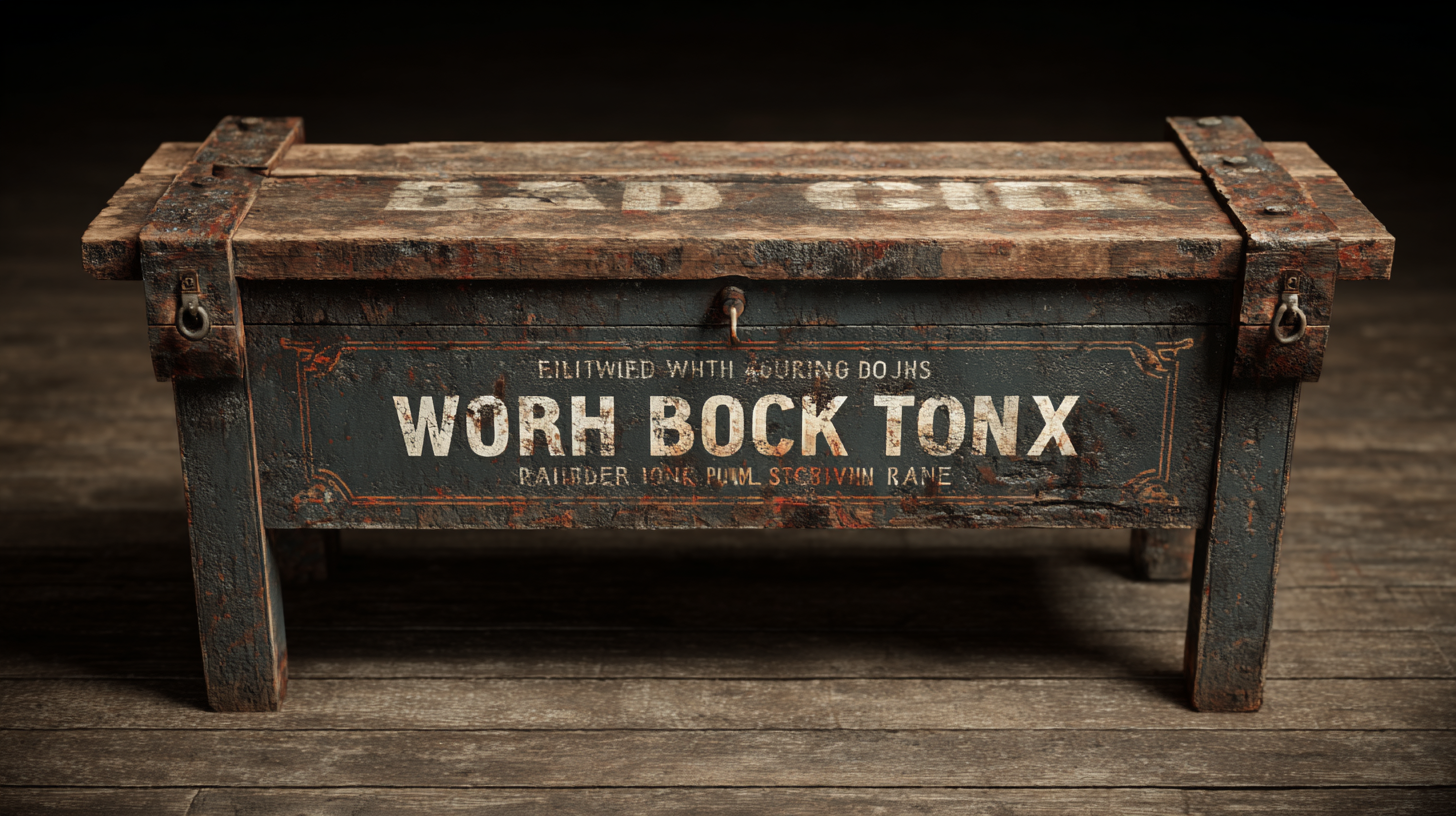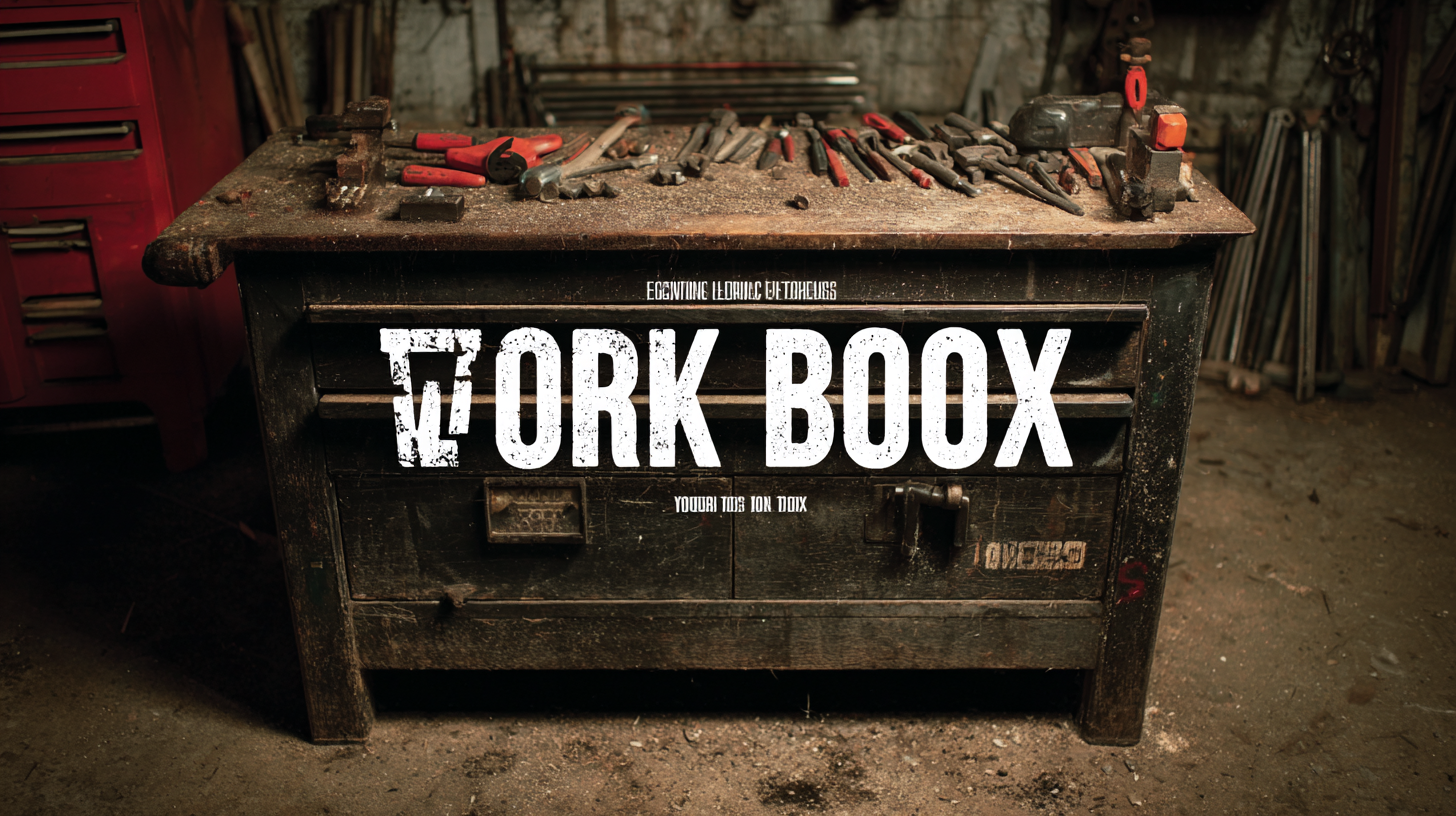Exploring the Future of Work Bench Tool Boxes in 2025 Industry Trends
As we delve into the future of work bench tool boxes by 2025, the global market landscape is witnessing significant transformations driven by technological advancements and shifting consumer demands. According to a report by Market Research Future, the global tool box market is projected to reach $3.86 billion by 2025, showcasing a compound annual growth rate (CAGR) of 5.22% from 2020 to 2025. This growth presents a unique opportunity for manufacturers, particularly those in China, to leverage high-quality production standards to capture a greater share of the international market. Characterized by their ergonomic designs and multifunctional capabilities, work bench tool boxes are evolving to meet the diverse needs of professionals across various industries, ultimately redefining efficiency and productivity on job sites.

As we explore these trends, it becomes crucial to understand how quality and innovation will play pivotal roles in shaping the future of this essential tool category on a global scale.
Identifying Key Industry Trends Shaping Tool Box Manufacturing by 2025
As we look towards 2025, the tool box manufacturing industry is poised for significant transformation, influenced by several key trends. According to a report by IBISWorld, the global tool storage market is projected to reach $6.6 billion by 2025, growing at an annual rate of approximately 4.1%. This growth is driven by increasing demands for more organized and efficient workspaces as industries prioritize productivity and safety. The rise of modular and customizable tool boxes allows professionals to adapt their storage solutions to specific job requirements, catering to a diverse range of industries from construction to automotive.
Sustainability is another crucial trend shaping the future of tool box manufacturing. Market research from Technavio highlights that eco-friendly materials, such as recycled plastics and sustainable wood, are becoming increasingly popular among consumers. With 62% of consumers expressing a preference for products made from environmentally responsible materials, manufacturers are adapting their designs to meet this demand. Furthermore, the integration of smart technology within tool boxes, such as inventory tracking and security features, is also expected to redefine how professionals manage their tools, ensuring efficiency and protection against loss.

Essential Features to Look for in High-Quality Tool Boxes
When considering the future of workbench tool boxes in 2025, it's essential to focus on the features that define high-quality models. One of the primary attributes is durability. As professionals increasingly rely on tool boxes for heavy-duty tasks, materials should not only withstand wear and tear but also remain resistant to rust and other environmental factors. Look for tool boxes made from high-grade metal or advanced polymers that can endure extreme conditions while providing a reliable storage solution.
Another critical feature to consider is organization design. The tool box of the future needs to include customizable compartments and tool trays that accommodate various tools and accessories. Innovation in this aspect ensures that users can efficiently access their tools, leading to enhanced productivity. Ergonomic designs that promote ease of use and portability are also on the rise. Features like non-slip handles and lightweight constructions make it easier for professionals to transport their tools from one location to another, marrying functionality with convenience. Ultimately, choosing a tool box that embodies these essential features will significantly impact the workflow efficiency in various industries.

Top Manufacturers Leading the Future of Tool Box Innovations
As we look ahead to 2025, the landscape for workbench tool boxes is evolving rapidly, driven by innovations from leading manufacturers. Companies such as Stanley, DeWalt, and Milwaukee are at the forefront, integrating smart technology and sustainable materials into their designs. These advancements not only enhance functionality but also streamline the user experience, providing seamless access to tools and supplies.
When selecting a tool box for the future, consider features like modularity and connectivity. Opt for designs that allow you to customize your storage solution based on specific project needs. Additionally, features like built-in charging ports and app connectivity can significantly improve efficiency, allowing users to manage their tools and inventory digitally.
Lastly, prioritize materials that are both durable and eco-friendly. Many manufacturers are now using recycled plastics and robust metals to ensure longevity while minimizing environmental impact. By focusing on these key trends and tips, you can make informed decisions that will prepare you for the innovations shaping the future of workbench tool boxes.
Future of Work Bench Tool Boxes in 2025 Industry Trends
How to Assess Manufacturer Reliability and Product Quality
In the rapidly evolving landscape of 2025's workbench tool boxes, assessing manufacturer reliability and product quality is crucial for any professional or DIY enthusiast. With numerous options flooding the market, it becomes essential to identify manufacturers that consistently deliver high-quality products. Start by examining their track record; a reliable manufacturer should have a history of positive customer feedback and a solid reputation within the industry. Seek out reviews from trusted sources, and don't hesitate to reach out to current users to gain insights into their experiences.
Another vital aspect to consider is the transparency of the manufacturer regarding their production processes and quality control measures. A reliable manufacturer will be willing to share information about their sourcing of materials and the standards they adhere to during production. Look for certifications and compliance with industry standards, which can serve as indicators of product quality. Lastly, investigate the warranty options available; a robust warranty can be a testament to the manufacturer’s confidence in their products and can provide peace of mind for the consumer. By focusing on these factors, you can make informed decisions and invest in tool boxes that meet your needs and withstand the demands of your work environment.
Tips for Choosing the Right Tool Box for Your Professional Needs
When selecting the right tool box for your professional needs, consider the following essential factors to ensure that you invest wisely. First, evaluate the size and capacity of the tool box. Depending on your trade, whether it’s carpentry, automotive repair, or electrical work, your tools will vary in size and quantity. A well-organized tool box should not only accommodate your current tools but also allow for future additions without losing accessibility.
Another critical consideration is the material and durability of the tool box. Professional environments can be demanding, and tool boxes made from high-grade steel or sturdy plastic withstand wear and tear better than their cheaper counterparts. Look for features like water resistance or added locks for security, especially if you often work in diverse locations or need to store your tools overnight. Lastly, think about mobility—wheeled tool boxes or those with ergonomic handles can make transporting heavy loads less of an ordeal, enhancing your efficiency on the job.
Exploring the Future of Work Bench Tool Boxes in 2025 Industry Trends - Tips for Choosing the Right Tool Box for Your Professional Needs
| Tool Box Type | Material | Weight Capacity (lbs) | Dimensions (inches) | Price Range ($) | Ideal Use |
|---|---|---|---|---|---|
| Portable Tool Box | Plastic | 50 | 18 x 12 x 8 | 30 - 75 | Home DIY |
| Rolling Tool Cabinet | Steel | 500 | 30 x 18 x 40 | 200 - 600 | Professional Workshops |
| Portable Workbench | Wood/Metal | 300 | 48 x 24 x 36 | 100 - 250 | Construction Sites |
| Tool Chest | Aluminum | 400 | 36 x 18 x 20 | 150 - 400 | Automotive Repair |
| Job Site Box | Steel | 1000 | 60 x 30 x 30 | 500 - 1000 | Construction Sites |
Footer
Resource Center
Contact Us
1901 West Main Street
Washington, MO 63090
Main Directory: 1-800-227-4873
Email: sale@pangcofurniture.com
Affiliations


